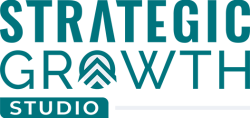Why the SBA 7(a) Loan Requires a Different Kind of Plan
The SBA 7(a) loan is the most popular small business financing option in the U.S. because it’s flexible, affordable, and widely accessible. But the approval process is also rigorous—and your business plan plays a critical role.
Banks and SBA reviewers use your plan to:
- Evaluate risk
- Confirm use of funds
- Understand your business model
- Assess repayment ability
This means your business plan for SBA 7(a) loans needs to be clear, compliant, and deeply aligned with your financial request.
The Required Sections (and What to Include)
- Executive Summary
- What you do
- Loan amount requested
- Use of funds
- Key financial highlights
- Company Description
- Business structure (LLC, S-Corp, etc.)
- Ownership breakdown
- Industry classification (NAICS code)
- Business history and mission
- Market Opportunity
- Industry outlook
- Market trends and competitive positioning
- Target customer demographics
- TAM/SAM/SOM breakdown
- Products and Services
- What you offer
- Pricing and revenue model
- Competitive advantage (USP)
- Marketing & Sales Strategy
- Customer acquisition strategy
- CAC estimate
- Sales funnel and conversion rates
- Retention and referral strategies
- Operations Plan
- Physical location
- Key personnel and responsibilities
- Equipment, technology, and suppliers
- Hiring and wage plans
- Management & Organization
- Leadership bios
- Advisory board (if applicable)
- Organizational chart
- Financial Projections
- 3-year P&L forecast
- 12-month cash flow (monthly)
- Break-even analysis
- Assumptions
- Repayment schedule (based on loan structure)
- Use of Funds
- Detailed breakdown of how SBA funds will be spent
- Examples: buildout, staffing, inventory, marketing, working capital
- Appendices (if needed)
- Resumes
- Lease agreements
- Quotes for equipment
- Market research reports
What SBA Reviewers Want to See
- Financial logic that matches the growth plan
- Market understanding (not just size, but fit)
- Reasonable assumptions
- Clear, specific use of funds tied to business goals
- A plan that shows how the loan enables revenue growth and stability
Your plan isn’t just a pitch. It’s a risk assessment tool for the bank.
SBA-Specific Tips
- Tie projections to DSCR goals: SBA wants to see a Debt Service Coverage Ratio of 1.25+ by Year 2.
- Show monthly cash flow: Especially important if you have seasonality or deferred revenue.
- Be exact with use of funds: SBA loans can’t be used for speculation or passive investment.
Common Mistakes to Avoid
- Using vague financials or no justification for assumptions
- Leaving out detailed use-of-funds
- Copy/pasting a generic template with no edits
- Skipping the operations or hiring plan
- Over-projecting revenue in Year 1
Final Thought: Show the Path to Repayment
The SBA isn’t betting on your passion. They’re evaluating your ability to generate cash and manage risk. A strong business plan for SBA 7(a) loans should prove that your business model, strategy, and financial forecast make that possible.
Want your plan to move quickly through underwriting? Make it easy to say yes.




